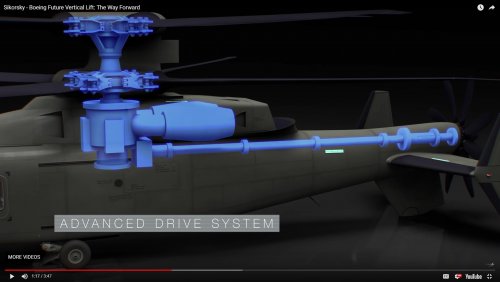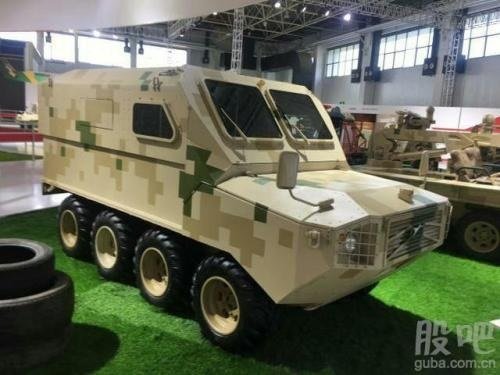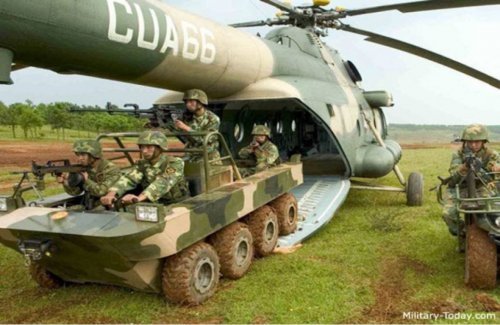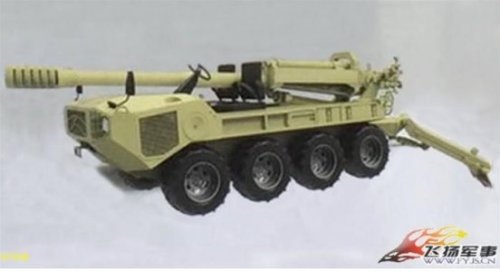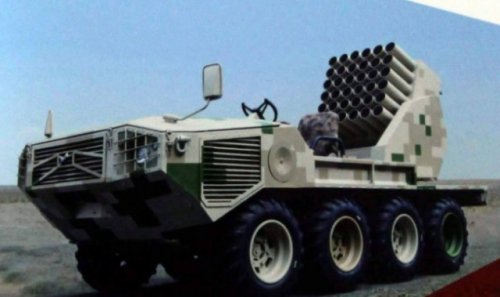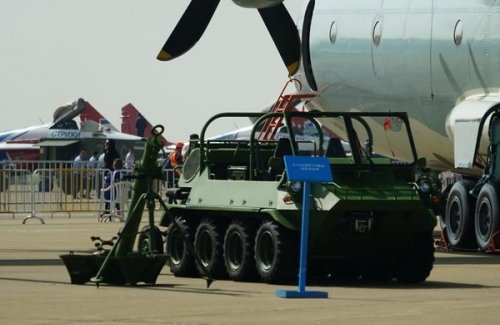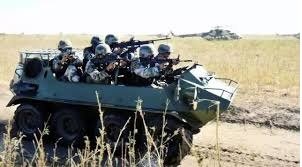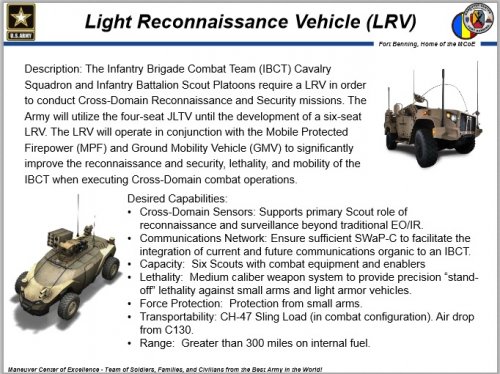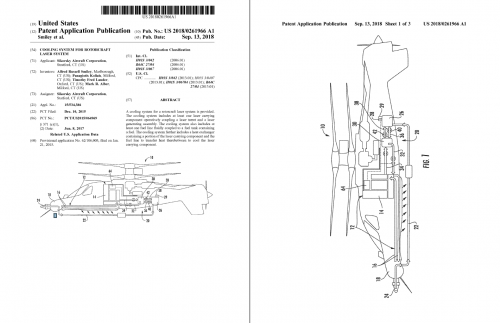You are using an out of date browser. It may not display this or other websites correctly.
You should upgrade or use an alternative browser.
You should upgrade or use an alternative browser.
JMR (Joint Multi-Role) & FVL (Future Vertical Lift) Programs
- Thread starter Grey Havoc
- Start date
The Army now calls this the Future Long-Range Assault Aircraft (FLRRA, pronounced “flora”), but earlier names for essentially the same thing are Future Vertical Lift Capability Set 3 (FVL CS-3) and the Joint Multi-Role Technology Demonstrator (JMR TD). Just to complicate matters, after years of prioritizing the mid-sized transport, CS-3 aka FLRRA, the Army announced in March that it also urgently needed a small armed scout, something in FVL Capability Set 1, which became FARA, the Future Armed Reconnaissance Aircraft.
Source:
https://breakingdefense.com/2018/10/sb1-defiant-will-be-worth-the-wait-sikorsky-boeing/
- Joined
- 6 September 2006
- Messages
- 4,834
- Reaction score
- 9,458
A flyaway price of $30 million seems ambitious, as is a Cost Per Flight Hour of less than $4,200.
Is this a serious tactic? I would think that would open you up to more ground threats.
https://breakingdefense.com/2018/10/army-wants-revolutionary-scout-aircraft-for-30-million/
Is this a serious tactic? I would think that would open you up to more ground threats.
It can have a maximum width of no more than 40 feet — counting rotor blades, fuselage, and (for tiltrotor designs) the wings — and a maximum length of 46.5 feet to allow the aircraft to hide from enemy radar by flying down city streets.
https://breakingdefense.com/2018/10/army-wants-revolutionary-scout-aircraft-for-30-million/
- Joined
- 3 June 2011
- Messages
- 18,337
- Reaction score
- 12,239
Hood said:A flyaway price of $30 million seems ambitious, as is a Cost Per Flight Hour of less than $4,200.
Is this a serious tactic? I would think that would open you up to more ground threats.
It can have a maximum width of no more than 40 feet — counting rotor blades, fuselage, and (for tiltrotor designs) the wings — and a maximum length of 46.5 feet to allow the aircraft to hide from enemy radar by flying down city streets.
https://breakingdefense.com/2018/10/army-wants-revolutionary-scout-aircraft-for-30-million/
Attachments
jsport
what do you know about surfing Major? you're from-
- Joined
- 27 July 2011
- Messages
- 7,732
- Reaction score
- 5,751
amensferrin said:Hood said:A flyaway price of $30 million seems ambitious, as is a Cost Per Flight Hour of less than $4,200.
Is this a serious tactic? I would think that would open you up to more ground threats.
It can have a maximum width of no more than 40 feet — counting rotor blades, fuselage, and (for tiltrotor designs) the wings — and a maximum length of 46.5 feet to allow the aircraft to hide from enemy radar by flying down city streets.
https://breakingdefense.com/2018/10/army-wants-revolutionary-scout-aircraft-for-30-million/

John21
ACCESS: Confidential
- Joined
- 27 May 2007
- Messages
- 150
- Reaction score
- 15
You think the Air Force would allow the Army to encroach on that kind of territory? Would be awesome to see though. God, if only Congress/The Senate would allow my dream of the Army taking over CAS, light attack and ISR and IntraTheater Transport operations.sferrin said:Hood said:A flyaway price of $30 million seems ambitious, as is a Cost Per Flight Hour of less than $4,200.
Is this a serious tactic? I would think that would open you up to more ground threats.
It can have a maximum width of no more than 40 feet — counting rotor blades, fuselage, and (for tiltrotor designs) the wings — and a maximum length of 46.5 feet to allow the aircraft to hide from enemy radar by flying down city streets.
https://breakingdefense.com/2018/10/army-wants-revolutionary-scout-aircraft-for-30-million/

- Joined
- 6 September 2006
- Messages
- 4,834
- Reaction score
- 9,458
That's why I never sweat too much on these concepts. Think of all those fancy 80s concepts, how many of them ever came close to actually working out beyond some cool artwork?
I get the same sense today, a lot of drooling about the potential of drone technology coupled with AI but not anything concrete that might stand the test of time or that might emerge in a totally different way.
I was just curious about the mention of hiding in cities. That presupposes urban conflict increases, thought I guess nap of the earth might sound old skool these days. I'm not entirely sold that low-altitude speed means defence, at least any appreciable decrease in risk over the current generation of scouts and gunships taking good use of cover.
I get the same sense today, a lot of drooling about the potential of drone technology coupled with AI but not anything concrete that might stand the test of time or that might emerge in a totally different way.
I was just curious about the mention of hiding in cities. That presupposes urban conflict increases, thought I guess nap of the earth might sound old skool these days. I'm not entirely sold that low-altitude speed means defence, at least any appreciable decrease in risk over the current generation of scouts and gunships taking good use of cover.
- Joined
- 18 October 2006
- Messages
- 4,211
- Reaction score
- 4,920
Hood said:That's why I never sweat too much on these concepts. Think of all those fancy 80s concepts, how many of them ever came close to actually working out beyond some cool artwork?
I get the same sense today, a lot of drooling about the potential of drone technology coupled with AI but not anything concrete that might stand the test of time or that might emerge in a totally different way.
I was just curious about the mention of hiding in cities. That presupposes urban conflict increases, thought I guess nap of the earth might sound old skool these days. I'm not entirely sold that low-altitude speed means defence, at least any appreciable decrease in risk over the current generation of scouts and gunships taking good use of cover.
Just like ground combat. The best way to stay alive is to keep something between you and the people trying to kill you. That said, I am a bit leery of flying low, zipping around between buildings. Visions of some clod dropping a potted plant through the rotor system ten floors above come to mind. We just celebrated the 25th anniversary of "Blackhawk Down". Flying between buildings remain a bad idea to me.
"Investment in Future Vertical Lift Worth The Risk, Industry Officials Agree"
by Dan Parsons | October 5, 2018
Source:
https://www.rotorandwing.com/2018/10/05/investment-future-vertical-lift-worth-risk-industry-officials-agree
by Dan Parsons | October 5, 2018
Source:
https://www.rotorandwing.com/2018/10/05/investment-future-vertical-lift-worth-risk-industry-officials-agree
Aircraft manufacturers are willing to develop next-generation rotorcraft technologies on their own dime as long as the U.S. military is committed to funding acquisition programs instead of pulling the rug out from under them, representatives of most heavyweight helicopter manufacturers agree.
The Army is again in the market for revolutionary new rotorcraft, but industry vividly remembers repeated past failures like the RAH-66 Comanche that ate up about $7 billion before being summarily canceled in 2004.
Even losing industry teams can justify developing new technologies if the government commits to a program, said Randy Rotte, Boeing’s director of global sales for cargo helicopters and future vertical lift programs.
“I would submit … that if you decide to compete in that space and make a huge investment and the program runs it’s course and you lose, that’s acceptable,” Rotte said Oct. 4 at a forum on future vertical lift hosted by the Royal Aeronautical Society at the British Embassy in Washington, D.C. “It’s OK to lose to, perhaps, someone better.”
Rotte was joined on the panel by Bell’s V-280 Program Manager Ryan Ehinger; Andrew Gappy, Director of U.S. Navy and Marine Corps Programs at Leonardo Helicopters and Lockheed’s Vice President of Army Programs Kevin Mangum.
“What’s not OK, or makes it really difficult to then justify the next-time investment, is when you invest and you get to a point and the program goes away,” he added. “Priorities change. We thought we wanted this and now we want that. That’s a cautionary tale.”
The U.S. Army has officially launched a search for a next-generation light scout aircraft amidst its ongoing Joint Multirole Technology Demonstration (JMR-TD) that has yielded one advanced tiltrotor flight demonstrator and a prototype compound helicopter.
The so-called Future Attack Reconnaissance Aircraft (FARA) will be the fifth time the Army has initiated a program to replace its legacy rotorcraft, Rotte pointed out. Comanche is joined by the Armed Aerial Scout competition, which supplanted the Armed Reconnaissance Helicopter and the Bell ARH-70 Arapaho that was canceled in 2008.
Industry has responded with a flurry innovative research-and-development activity aimed at achieving high-speed, highly maneuverable aircraft. Bell test pilots have put more than 60 hours on the V-280 Valor demonstrator while Sikorsky’s S-97 Raider recently achieved 202 knots in level flight. The Boeing-Sikorsky SB-1 Defiant is nearing completion and prepping for a first flight before the end of the year.
While either or both of those may represent the future of Army aviation, industry has laid out massive sums for their development. Boeing/Lockheed Martin and Bell, the two primary industry teams participating in JMR-TD, have invested as much as one billion dollars in development of their operational prototypes, according to an industry source. The U.S. Army has invested less than half that with no commitment to purchase either design.
“Before we embark on any of these endeavors, we do a very rigorous analysis of business cases, as we’re competing internally for our own funds,” Rotte said. “We’re competing with programs from all different services, from the commercial sector, for space.”
Lockheed’s Mangum, a former three-star Army general who commanded the service’s aviation center of excellence at Fort Rucker, said that developing revolutionary new aircraft is an inherently expensive endeavor, but aerospace primes cannot afford not to enter the ring.
“Another twist on that is, can you afford not to be in the market? These are franchises that will be enduring,” Mangum said. “With all of the services now exercising other transactional authorities and mid-tier authorities,I think everybody including the services are trying to figure out what in the world that means and how that is going to play.”
“It’s a brave new world and that makes this adventure of changing the future of rotorcraft all the more sporty and interesting,” he added.
- Joined
- 6 September 2006
- Messages
- 4,834
- Reaction score
- 9,458
Boeing is fretting that FVL will reduce the funds available for the CH-47 Block II upgrade programme, driving up the unit costs.
https://www.flightglobal.com/news/articles/boeing-frets-about-unit-cost-outlook-for-chinook-upg-452518/
https://www.flightglobal.com/news/articles/boeing-frets-about-unit-cost-outlook-for-chinook-upg-452518/
- Joined
- 18 October 2006
- Messages
- 4,211
- Reaction score
- 4,920
Hood said:Boeing is fretting that FVL will reduce the funds available for the CH-47 Block II upgrade programme, driving up the unit costs.
https://www.flightglobal.com/news/articles/boeing-frets-about-unit-cost-outlook-for-chinook-upg-452518/
This no doubt creates some awkward conversation with the Sikorsky-Boeing Team.
- Joined
- 21 April 2009
- Messages
- 13,756
- Reaction score
- 7,696
https://www.military.com/dodbuzz/2018/10/10/army-see-designs-future-attack-recon-helicopters-december.html
U.S. Army aviation leaders offered details Wednesday about recent solicitations to industry designed to advance the attack-reconnaissance and advanced drone aircraft programs for the service's ambitious Future Vertical Lift effort.
"We had a very good week last week in dropping two [requests for proposal]. ... The big one for us was the solicitation on the Future Attack Reconnaissance Aircraft," Brig. Gen. Wally Rugen, director of the Future Vertical Lift, Cross Functional Team, told an audience at the 2018 Association of the United States Army Annual Meeting and Exposition.
- Joined
- 18 October 2006
- Messages
- 4,211
- Reaction score
- 4,920
http://www.nationaldefensemagazine.org/articles/2018/10/11/army-pushing-forward-with-major-future-helicopter-projects
“Let’s make sure on the product that speed, range, capability — that we get that right” he said. “There are different risks that have to be considered.” One is the issue of scale: a technology that works great on a smaller helicopter may not make the transition to a larger one, he added. - Deputy Secretary of Defense Patrick Shanahan
His former company (Boeing) and their JMR partner (Sikorsky) probably not excited to hear the DEPSECDEF say these sort of things.
“Let’s make sure on the product that speed, range, capability — that we get that right” he said. “There are different risks that have to be considered.” One is the issue of scale: a technology that works great on a smaller helicopter may not make the transition to a larger one, he added. - Deputy Secretary of Defense Patrick Shanahan
His former company (Boeing) and their JMR partner (Sikorsky) probably not excited to hear the DEPSECDEF say these sort of things.
GWrecks
Big Wingy Thingy
- Joined
- 15 July 2018
- Messages
- 76
- Reaction score
- 19
yasotay said:http://www.nationaldefensemagazine.org/articles/2018/10/11/army-pushing-forward-with-major-future-helicopter-projects
“Let’s make sure on the product that speed, range, capability — that we get that right” he said. “There are different risks that have to be considered.” One is the issue of scale: a technology that works great on a smaller helicopter may not make the transition to a larger one, he added. - Deputy Secretary of Defense Patrick Shanahan
His former company (Boeing) and their JMR partner (Sikorsky) probably not excited to hear the DEPSECDEF say these sort of things.
One thing that confuses me is why Sikorsky/Boeing has to stick to the same "coaxial rotor" design for their larger aircraft.
I personally would have thought they should go for something like the Ka-22, at least starting at the Heavy level and going upward. But of course I'm suggesting things from a spinny chair.
- Joined
- 4 July 2010
- Messages
- 2,515
- Reaction score
- 3,093
The Boeing team has proposed non-X2 solutions for the larger aircraft in the past, including large tilt-rotors or tandems. I don't know what their current mix is, but I doubt they're expecting a one-winner-takes-all segments outcome.GWrecks said:yasotay said:http://www.nationaldefensemagazine.org/articles/2018/10/11/army-pushing-forward-with-major-future-helicopter-projects
“Let’s make sure on the product that speed, range, capability — that we get that right” he said. “There are different risks that have to be considered.” One is the issue of scale: a technology that works great on a smaller helicopter may not make the transition to a larger one, he added. - Deputy Secretary of Defense Patrick Shanahan
His former company (Boeing) and their JMR partner (Sikorsky) probably not excited to hear the DEPSECDEF say these sort of things.
One thing that confuses me is why Sikorsky/Boeing has to stick to the same "coaxial rotor" design for their larger aircraft.
I personally would have thought they should go for something like the Ka-22, at least starting at the Heavy level and going upward. But of course I'm suggesting things from a spinny chair.
- Joined
- 3 October 2007
- Messages
- 1,960
- Reaction score
- 1,197
TomcatViP said:Since they took the time to industrialize fiber placement on blade spars, it would seems inconvenient not to have ABC fitted to all their final proposals.
I believe a while back Sikorsky (pre-LM) had acknowledged that ABC would not scale up to the heavier/larger sizes. It might have to do with the amount of space and possibly weight required by the mast and transmission. Before the X2 demonstrator flew, artists' concepts of X2 vehicles depicted the mast over the cabin, as in conventional helicopters. About the time the X2 rolled out, all depictions started showing the entire cabin as being forward of the mast. This would pose a problem as vehicles grew in size.
I am pretty sure that I heard also some similar statements.
The drive train is pretty massive already. It takes a lot of space and push them where they don't want to be in term of the overall volume of the airframe. They probably want to be air-transportable and this might restrict the size of the cabin, hence the conflict that you have mentioned. But, to me, with CFRP structural design, it's not the mass that would pose problem but more the resulting size of the airframe.
The drive train is pretty massive already. It takes a lot of space and push them where they don't want to be in term of the overall volume of the airframe. They probably want to be air-transportable and this might restrict the size of the cabin, hence the conflict that you have mentioned. But, to me, with CFRP structural design, it's not the mass that would pose problem but more the resulting size of the airframe.
Attachments
- Joined
- 18 October 2006
- Messages
- 4,211
- Reaction score
- 4,920
TomcatViP said:I am pretty sure that I heard also some similar statements.
The drive train is pretty massive already. It takes a lot of space and push them where they don't want to be in term of the overall volume of the airframe. They probably want to be air-transportable and this might restrict the size of the cabin, ...
I very much doubt that SB>1 will not be OPERATIONALLY air transportable, not due to cabin size, but more so that the transmission and rotor hubs would have to be pulled to fit the aircraft into an air transport.
To the point F-14D made, this may be the upper limit of sizing for X2 (ABC). Did not Sikorsky look at X2 for the Heavy Lift effort a few years ago? I was under the impression they dropped it and actually looked at tilt rotor for the C-130 and above effort.
jsport
what do you know about surfing Major? you're from-
- Joined
- 27 July 2011
- Messages
- 7,732
- Reaction score
- 5,751
sferrin said:It was a bit of a joke. I remember, back in the 80s, when the Phalanx Dragon was supposed to be the $hit. Turned out to be more of a scam.
Although a scam the idea of mini VTOL fighter is Army Cdrs dream. The Army has finally made clear "stand-off" is a primary goal. A Standoff (range & endurance) Swarm UASs are needed the High intensity environment and those need to be fixed wing. Heliocopters are going to have limited roles in High Intensity, large landmass, Battlespace IADS fights. A manned craft for far forward local semi/control of that UAS swarm is also needed.
Even more to the point since the AF has abandoned CAS as a mission the Army must advocate for the return of their own fixed wing CAS aircraft. The pocket VTOL ReconCAS/fighter at the Div/Bde Cdr's disposal is life in future high intensity environments.
- Joined
- 18 October 2006
- Messages
- 4,211
- Reaction score
- 4,920
jsport said:sferrin said:It was a bit of a joke. I remember, back in the 80s, when the Phalanx Dragon was supposed to be the $hit. Turned out to be more of a scam.
Although a scam the idea of mini VTOL fighter is Army Cdrs dream. The Army has finally made clear "stand-off" is a primary goal. A Standoff (range & endurance) Swarm UASs are needed the High intensity environment and those need to be fixed wing. Heliocopters are going to have limited roles in High Intensity, large landmass, Battlespace IADS fights. A manned craft for far forward local semi/control of that UAS swarm is also needed.
Even more to the point since the AF has abandoned CAS as a mission the Army must advocate for the return of their own fixed wing CAS aircraft. The pocket VTOL ReconCAS/fighter at the Div/Bde Cdr's disposal is life in future high intensity environments.
While I agree with your sentiment, I think there is a 10% chance the Army would fight for CAS mission and a pocket VTOL ReconCAS/fighter. That won't stop the Army for wanting everything under the sun in their new rotorcraft. Just has to be $1.50 worth.
jsport
what do you know about surfing Major? you're from-
- Joined
- 27 July 2011
- Messages
- 7,732
- Reaction score
- 5,751
Dont get me wrong Commanche like performance and carrying as few as two scouts/pax would be game changer but a jet CAS needs to come from somewhere.yasotay said:jsport said:sferrin said:It was a bit of a joke. I remember, back in the 80s, when the Phalanx Dragon was supposed to be the $hit. Turned out to be more of a scam.
Although a scam the idea of mini VTOL fighter is Army Cdrs dream. The Army has finally made clear "stand-off" is a primary goal. A Standoff (range & endurance) Swarm UASs are needed the High intensity environment and those need to be fixed wing. Heliocopters are going to have limited roles in High Intensity, large landmass, Battlespace IADS fights. A manned craft for far forward local semi/control of that UAS swarm is also needed.
Even more to the point since the AF has abandoned CAS as a mission the Army must advocate for the return of their own fixed wing CAS aircraft. The pocket VTOL ReconCAS/fighter at the Div/Bde Cdr's disposal is life in future high intensity environments.
While I agree with your sentiment, I think there is a 10% chance the Army would fight for CAS mission and a pocket VTOL ReconCAS/fighter. That won't stop the Army for wanting everything under the sun in their new rotorcraft. Just has to be $1.50 worth.
- Joined
- 18 October 2006
- Messages
- 4,211
- Reaction score
- 4,920
Army Approaches Its Biggest Aviation Decision In 60 Years: Whether To Buy Tiltrotors
By Loren Thompson, Forbes, October 17, 2018
The Association of the United States Army held its annual conference and exposition in the nation’s capital last week. The event was huge and heavily attended, with hundreds of suppliers participating. But it wasn’t hard to figure out who had the biggest exhibit. It was Textron, owner of Bell Helicopter, which brought a full-scale model of a tiltrotor combat aircraft to the event.
Textron isn’t ranked among the Pentagon’s top contractors, but it sees an opportunity in the near future to reach a breakthrough deal with the Army comparable to when it sold thousands of UH-1 ‘Hueys” during the Vietnam War. The Army is seeking to replace all of its current rotorcraft with next-generation aircraft under a joint program called Future Vertical Lift, and Textron thinks its unique tiltrotor technology is what the Army needs.
So Bell/Textron is spending lavishly on telling the tiltrotor story. Not just at conferences, but by building an eye-popping marketing and simulation facility a stone’s throw from the Pentagon. The facility, which takes up an entire floor in a high-rise office building, enables Pentagon executives, military officers, and congressional aides to see how tiltrotor technology could transform the way Army Aviation operates.
Bell/Textron built the world’s first production tiltrotor, the V-22 Osprey, for the U.S. Marine Corps and Air Force special operators. After a bumpy start, the program produced the most versatile rotorcraft in the joint fleet due to its ability to take off and land vertically like a helicopter, but then pivot its engines in flight to deliver the range, speed and payload of a fixed-wing aircraft.
Four decades after Bell/Textron first proved that was possible, the Army is the only military service within the defense department that has not embraced tiltrotors. It backed out of the V-22 program in 1988, and since then it has watched the Marines use Osprey to accomplish missions that previously would have been impossible. The legacy Sea Knight helicopters that Osprey replaced could barely reach every part of Iraq’s Anbar Province; Ospreys located at the same base can reach all of Iraq, Syria and Lebanon, plus large portions of Iran, Jordan and Turkey.
And they can get where they are going fast – at over 300 miles per hour if necessary. No conventional rotorcraft can do that. Air Force special operators have achieved the same operational gains with their own version of the Osprey. And now the Navy has begun replacing its aged airplanes used for delivering supplies to the fleet with a third variant of the Osprey. Army aviators have been following all this, and no doubt wondering whether their own service should have stuck with the program rather than choosing to pursue conventional helicopters like Black Hawk and Apache.
Tiltrotors aren’t superior to conventional rotorcraft in all regards. The Army wants future scout helicopters small enough to hover in the “urban canyons” of contested cities, and that could be tricky with a tiltrotor because the placement of its engines and rotors gives it a bigger footprint than legacy scouts. But the first step in replacing Army Aviation’s current fleet is to find a successor to those medium-size Black Hawks and Apaches, and there the tiltrotor shines. You can tell senior aviators are intrigued by the possibilities, even if they are wary about the price.
However, to win that prize Bell/Textron will have to overcome formidable opposition from an advanced helicopter being offered by a team of Sikorsky/Lockheed and Boeing. Like Bell/Textron, the Lockheed-Boeing team has developed an all-new rotorcraft for a demonstrator program that will feed into the Future Vertical Lift effort. The Lockheed-Boeing offering is called the SB-1 Defiant. The third-generation tiltrotor Bell/Textron is offering is called the V-280 Valor. Together, they define the state of the art in rotorcraft design.
I should note that all three of these companies contribute to my think tank, and Lockheed Martin is a consulting client. So you could say I don’t have a dog in the fight. Or maybe I have too many dogs in the fight. After talking to senior Army officials about what they expect from the Future Vertical Lift program, I’m convinced that it could signal the biggest shift in how the Army thinks about its aviation assets since the introduction of turbine-engine helicopters in Vietnam 60 years ago.
Not that the Army doesn’t like the helicopters it already has. Black Hawk, made by Sikorsky/Lockheed, is the most widely used utility/transport rotorcraft in the world. Over 4,000 have been built in multiple variants for the Army, Navy, Air Force and numerous allies. Apache remains by far the most capable attack helicopter ever fielded. The Army is spending heavily to add features to both helicopters, which means they will likely remain in the fleet through mid-century.
So why even consider tilt-rotors, or for that matter the fast, quiet Defiant? The reason is that threats are growing at the high end of the conflict spectrum, with countries like Russia and China deploying agile air defenses, sophisticated electronic warfare capabilities, and clever cyber warfare skills. Existing rotorcraft might not be able to survive or fight effectively in places like Eastern Europe if war breaks out there. Like its sister services, the Army needs to match investment plans to the ominous threat landscape laid out in the Trump administration’s National Defense Strategy.
This is the kind of environment in which militaries need to rethink their most fundamental assumptions about the future of warfare. And Trump has seen to it that the Army gets the money it requires to fund major departures from past plans.
So Bell/Textron is probably smart to place a big bet on a technology in which it leads the world. On the other hand, Sikorsky/Lockheed and Boeing have spent heavily on making Defiant the most capable combat helicopter ever created, and they have the financial resources to spend more. Future Vertical Lift is shaping up to be the most interesting contractor rivalry in years, with tens of billions of dollars on the table.
By Loren Thompson, Forbes, October 17, 2018
The Association of the United States Army held its annual conference and exposition in the nation’s capital last week. The event was huge and heavily attended, with hundreds of suppliers participating. But it wasn’t hard to figure out who had the biggest exhibit. It was Textron, owner of Bell Helicopter, which brought a full-scale model of a tiltrotor combat aircraft to the event.
Textron isn’t ranked among the Pentagon’s top contractors, but it sees an opportunity in the near future to reach a breakthrough deal with the Army comparable to when it sold thousands of UH-1 ‘Hueys” during the Vietnam War. The Army is seeking to replace all of its current rotorcraft with next-generation aircraft under a joint program called Future Vertical Lift, and Textron thinks its unique tiltrotor technology is what the Army needs.
So Bell/Textron is spending lavishly on telling the tiltrotor story. Not just at conferences, but by building an eye-popping marketing and simulation facility a stone’s throw from the Pentagon. The facility, which takes up an entire floor in a high-rise office building, enables Pentagon executives, military officers, and congressional aides to see how tiltrotor technology could transform the way Army Aviation operates.
Bell/Textron built the world’s first production tiltrotor, the V-22 Osprey, for the U.S. Marine Corps and Air Force special operators. After a bumpy start, the program produced the most versatile rotorcraft in the joint fleet due to its ability to take off and land vertically like a helicopter, but then pivot its engines in flight to deliver the range, speed and payload of a fixed-wing aircraft.
Four decades after Bell/Textron first proved that was possible, the Army is the only military service within the defense department that has not embraced tiltrotors. It backed out of the V-22 program in 1988, and since then it has watched the Marines use Osprey to accomplish missions that previously would have been impossible. The legacy Sea Knight helicopters that Osprey replaced could barely reach every part of Iraq’s Anbar Province; Ospreys located at the same base can reach all of Iraq, Syria and Lebanon, plus large portions of Iran, Jordan and Turkey.
And they can get where they are going fast – at over 300 miles per hour if necessary. No conventional rotorcraft can do that. Air Force special operators have achieved the same operational gains with their own version of the Osprey. And now the Navy has begun replacing its aged airplanes used for delivering supplies to the fleet with a third variant of the Osprey. Army aviators have been following all this, and no doubt wondering whether their own service should have stuck with the program rather than choosing to pursue conventional helicopters like Black Hawk and Apache.
Tiltrotors aren’t superior to conventional rotorcraft in all regards. The Army wants future scout helicopters small enough to hover in the “urban canyons” of contested cities, and that could be tricky with a tiltrotor because the placement of its engines and rotors gives it a bigger footprint than legacy scouts. But the first step in replacing Army Aviation’s current fleet is to find a successor to those medium-size Black Hawks and Apaches, and there the tiltrotor shines. You can tell senior aviators are intrigued by the possibilities, even if they are wary about the price.
However, to win that prize Bell/Textron will have to overcome formidable opposition from an advanced helicopter being offered by a team of Sikorsky/Lockheed and Boeing. Like Bell/Textron, the Lockheed-Boeing team has developed an all-new rotorcraft for a demonstrator program that will feed into the Future Vertical Lift effort. The Lockheed-Boeing offering is called the SB-1 Defiant. The third-generation tiltrotor Bell/Textron is offering is called the V-280 Valor. Together, they define the state of the art in rotorcraft design.
I should note that all three of these companies contribute to my think tank, and Lockheed Martin is a consulting client. So you could say I don’t have a dog in the fight. Or maybe I have too many dogs in the fight. After talking to senior Army officials about what they expect from the Future Vertical Lift program, I’m convinced that it could signal the biggest shift in how the Army thinks about its aviation assets since the introduction of turbine-engine helicopters in Vietnam 60 years ago.
Not that the Army doesn’t like the helicopters it already has. Black Hawk, made by Sikorsky/Lockheed, is the most widely used utility/transport rotorcraft in the world. Over 4,000 have been built in multiple variants for the Army, Navy, Air Force and numerous allies. Apache remains by far the most capable attack helicopter ever fielded. The Army is spending heavily to add features to both helicopters, which means they will likely remain in the fleet through mid-century.
So why even consider tilt-rotors, or for that matter the fast, quiet Defiant? The reason is that threats are growing at the high end of the conflict spectrum, with countries like Russia and China deploying agile air defenses, sophisticated electronic warfare capabilities, and clever cyber warfare skills. Existing rotorcraft might not be able to survive or fight effectively in places like Eastern Europe if war breaks out there. Like its sister services, the Army needs to match investment plans to the ominous threat landscape laid out in the Trump administration’s National Defense Strategy.
This is the kind of environment in which militaries need to rethink their most fundamental assumptions about the future of warfare. And Trump has seen to it that the Army gets the money it requires to fund major departures from past plans.
So Bell/Textron is probably smart to place a big bet on a technology in which it leads the world. On the other hand, Sikorsky/Lockheed and Boeing have spent heavily on making Defiant the most capable combat helicopter ever created, and they have the financial resources to spend more. Future Vertical Lift is shaping up to be the most interesting contractor rivalry in years, with tens of billions of dollars on the table.
- Joined
- 2 August 2006
- Messages
- 3,255
- Reaction score
- 1,527
The other point that will need to be considered between the V-280 and the SB-1 is how does Textron respond if Boeing goes all in with the SB-1 at a ridiculously fixed price as they have been doing on their other program wins recently. I'm of the opinion that both vehicles should be built; SB-1 for the Army to replace the Blackhawks and the V-280 to replace all special operator aircraft in every branch of service and all of the Marines aviation assets should be the V-280 and F-35B.
Missions that require mostly hovering, like the Army does and the Navy does with rescue around the carrier, should be the SB-1 or S-97. All other missions which are more long range and need hover would be the V-280. I see them more as complimentary vehicles, more the competitors. But, ultimately, I think it's going to come down to which the Army considers more important; long range and speed or more efficient time spent in the hover.
Missions that require mostly hovering, like the Army does and the Navy does with rescue around the carrier, should be the SB-1 or S-97. All other missions which are more long range and need hover would be the V-280. I see them more as complimentary vehicles, more the competitors. But, ultimately, I think it's going to come down to which the Army considers more important; long range and speed or more efficient time spent in the hover.
- Joined
- 18 October 2006
- Messages
- 4,211
- Reaction score
- 4,920
Only challenge for the Boeing bid, is that they don't get to set the cost by themselves as they are teamed. I suspect that this new small margin proposal method will be in effect for the FARA and FLRAA FVL efforts. The real question becomes, which team can afford to "go low" more. I would not be surprised if they bid for a loss on the initial buy, then recoup on follow on and foreign sales. Just have to be careful not to follow the Hughes Helicopter model (OH-6).
I can see a logic to your proposal, however I can see an alternate where Sikorsky (Lockheed) gets the smaller FARA award based on the S-97 (USA and USCG) and Bell - Lockheed get FLRAA based on V-280 (USA and USMC). SOF gets both. Boeing gets CH-47 Block 2 thru Z and AH-64 upgrades. Everybody gets to build rotorcraft for twenty years and the Congressional delegations from "pick-a-state" are happy.
I can see a logic to your proposal, however I can see an alternate where Sikorsky (Lockheed) gets the smaller FARA award based on the S-97 (USA and USCG) and Bell - Lockheed get FLRAA based on V-280 (USA and USMC). SOF gets both. Boeing gets CH-47 Block 2 thru Z and AH-64 upgrades. Everybody gets to build rotorcraft for twenty years and the Congressional delegations from "pick-a-state" are happy.
jsport
what do you know about surfing Major? you're from-
- Joined
- 27 July 2011
- Messages
- 7,732
- Reaction score
- 5,751
S-97 buy is good yes, but would still agree the SB-1 is still needed for the USArmy.yasotay said:Only challenge for the Boeing bid, is that they don't get to set the cost by themselves as they are teamed. I suspect that this new small margin proposal method will be in effect for the FARA and FLRAA FVL efforts. The real question becomes, which team can afford to "go low" more. I would not be surprised if they bid for a loss on the initial buy, then recoup on follow on and foreign sales. Just have to be careful not to follow the Hughes Helicopter model (OH-6).
I can see a logic to your proposal, however I can see an alternate where Sikorsky (Lockheed) gets the smaller FARA award based on the S-97 (USA and USCG) and Bell - Lockheed get FLRAA based on V-280 (USA and USMC). SOF gets both. Boeing gets CH-47 Block 2 thru Z and AH-64 upgrades. Everybody gets to build rotorcraft for twenty years and the Congressional delegations from "pick-a-state" are happy.
https://youtu.be/VJ6nCpBLHJEBell's newest tilt rotor aircraft, the V-280, is shown off in Arlington, Texas at their FRC. The aircraft is one Bell hopes to sell to the U.S. Army to replace the Black Hawk helicopter.
Source:
The Dallas Morning News
- Joined
- 18 October 2006
- Messages
- 4,211
- Reaction score
- 4,920
jsport said:They phrase being "long range assault". The Army needs long range assault but they also need complex terrain assault like the SB-1.
There is no monetary reason that the Army cannot have both.
jsport
what do you know about surfing Major? you're from-
- Joined
- 27 July 2011
- Messages
- 7,732
- Reaction score
- 5,751
Ok then AVX needs to receive continuing USG contract support for an eventual US Army et al helicopter that can carry vehicles internally into complex terrain..yasotay said:jsport said:They phrase being "long range assault". The Army needs long range assault but they also need complex terrain assault like the SB-1.
There is no monetary reason that the Army cannot have both.
A Chinook replacement should likely be twice the size of the current Ch-47.
- Joined
- 3 June 2011
- Messages
- 18,337
- Reaction score
- 12,239
- Joined
- 18 October 2006
- Messages
- 4,211
- Reaction score
- 4,920
sferrin said:
Army baulks at ~$50M per rotorcraft. Won't even look at a ~$70M per rotorcraft everyone else uses. So a ~ $100M (okay lets say ~$90M for an Army sized buy) per aircraft is unobtainium. If they need it real bad or not. You know how many tank battalions you can get for $100M!!
jsport
what do you know about surfing Major? you're from-
- Joined
- 27 July 2011
- Messages
- 7,732
- Reaction score
- 5,751
An inability to carry even a small vehicle especially from the tilt-rotor is a major drawback for the US Army. That capability is at least something the V-22 has right. Not even sure why the emphasis on the non-moving nacelle to facilitate side exit. Dismounts need to mount and escape, travel distances, possess a vehicle mounted support wpn etc.. Side exit...for what?
- Joined
- 18 October 2006
- Messages
- 4,211
- Reaction score
- 4,920
jsport said:An inability to carry even a small vehicle especially from the tilt-rotor is a major drawback for the US Army. That capability is at least something the V-22 has right. Not even sure why the emphasis on the non-moving nacelle to facilitate side exit. Dismounts need to mount and escape, travel distances, possess a vehicle mounted support wpn etc.. Side exit...for what?
Side exit and non-moving nacelle are there because the Army wants a 2X fast Blackhawk. Non-moving nacelle allow the door gunners to not have blockage for the firing arch's of their weapons. The Army no longer has "small" vehicles. Even the Hummer replacement is much heavier.
jsport
what do you know about surfing Major? you're from-
- Joined
- 27 July 2011
- Messages
- 7,732
- Reaction score
- 5,751
The Army uses plenty modified ATVs, and not just Specops, even have seen an ATV mounting a Counter Drone laser made by Raytheon. They wouldnt bother if they didnt have customer. Have seen ATV UAS ground bases and ATVs in maneuver w/ Strykers. Specially outfitted ATV teams used to counter UAVs for Stryker formations. Armored ATVs from Israel being pitched to the Army. As the movement toward distributed ops will demand small vehicles. The USMC well aware of that. No small vehicles, more like more ATVs as one JTLV can barely be lifted externally by a CH-47.yasotay said:jsport said:An inability to carry even a small vehicle especially from the tilt-rotor is a major drawback for the US Army. That capability is at least something the V-22 has right. Not even sure why the emphasis on the non-moving nacelle to facilitate side exit. Dismounts need to mount and escape, travel distances, possess a vehicle mounted support wpn etc.. Side exit...for what?
Side exit and non-moving nacelle are there because the Army wants a 2X fast Blackhawk. Non-moving nacelle allow the door gunners to not have blockage for the firing arch's of their weapons. The Army no longer has "small" vehicles. Even the Hummer replacement is much heavier.


